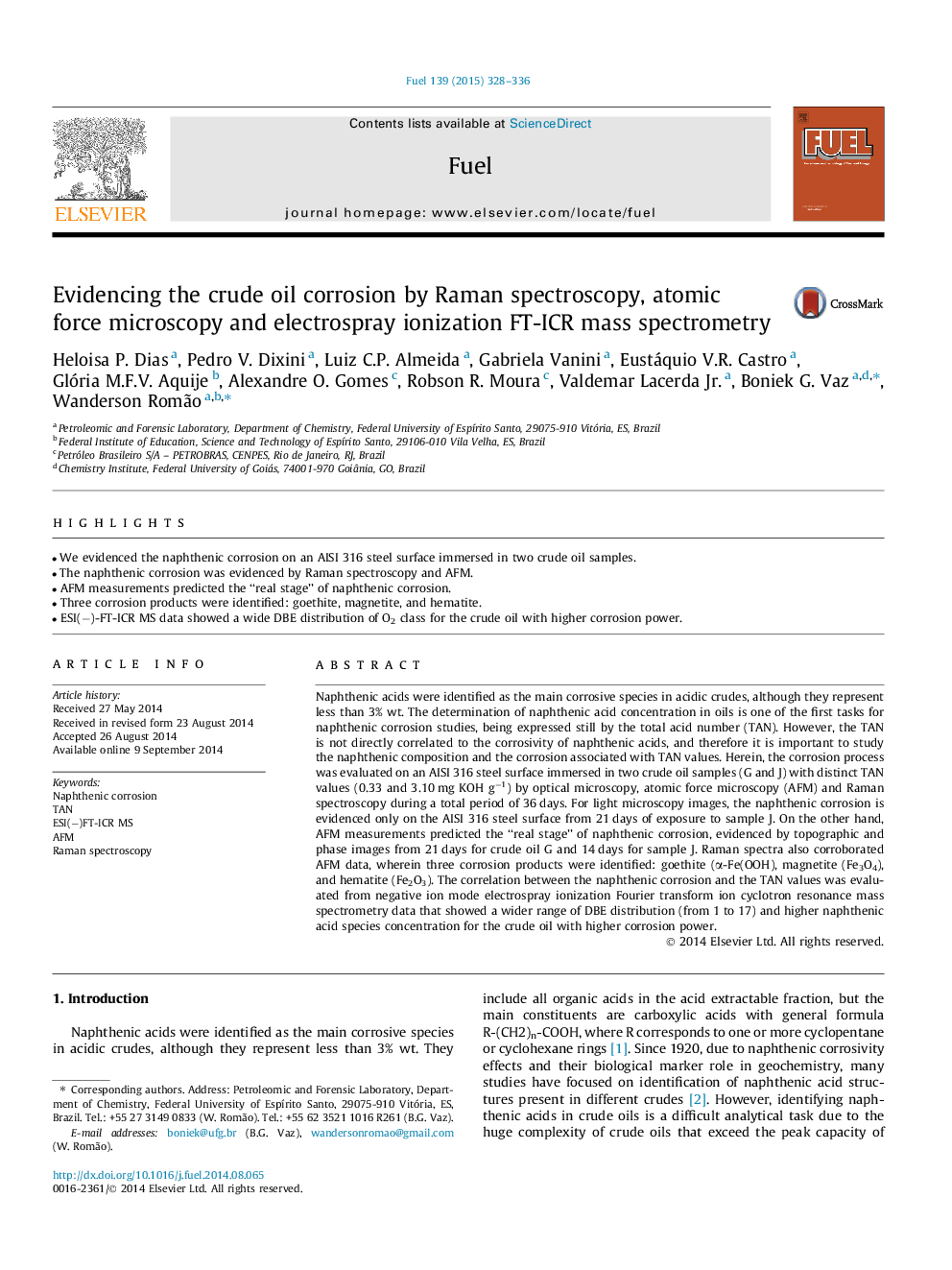| Article ID | Journal | Published Year | Pages | File Type |
|---|---|---|---|---|
| 6636524 | Fuel | 2015 | 9 Pages |
Abstract
Naphthenic acids were identified as the main corrosive species in acidic crudes, although they represent less than 3% wt. The determination of naphthenic acid concentration in oils is one of the first tasks for naphthenic corrosion studies, being expressed still by the total acid number (TAN). However, the TAN is not directly correlated to the corrosivity of naphthenic acids, and therefore it is important to study the naphthenic composition and the corrosion associated with TAN values. Herein, the corrosion process was evaluated on an AISI 316 steel surface immersed in two crude oil samples (G and J) with distinct TAN values (0.33 and 3.10 mg KOH gâ1) by optical microscopy, atomic force microscopy (AFM) and Raman spectroscopy during a total period of 36 days. For light microscopy images, the naphthenic corrosion is evidenced only on the AISI 316 steel surface from 21 days of exposure to sample J. On the other hand, AFM measurements predicted the “real stage” of naphthenic corrosion, evidenced by topographic and phase images from 21 days for crude oil G and 14 days for sample J. Raman spectra also corroborated AFM data, wherein three corrosion products were identified: goethite (α-Fe(OOH), magnetite (Fe3O4), and hematite (Fe2O3). The correlation between the naphthenic corrosion and the TAN values was evaluated from negative ion mode electrospray ionization Fourier transform ion cyclotron resonance mass spectrometry data that showed a wider range of DBE distribution (from 1 to 17) and higher naphthenic acid species concentration for the crude oil with higher corrosion power.
Keywords
Related Topics
Physical Sciences and Engineering
Chemical Engineering
Chemical Engineering (General)
Authors
Heloisa P. Dias, Pedro V. Dixini, Luiz C.P. Almeida, Gabriela Vanini, Eustáquio V.R. Castro, Glória M.F.V. Aquije, Alexandre O. Gomes, Robson R. Moura, Valdemar Jr., Boniek G. Vaz, Wanderson Romão,
